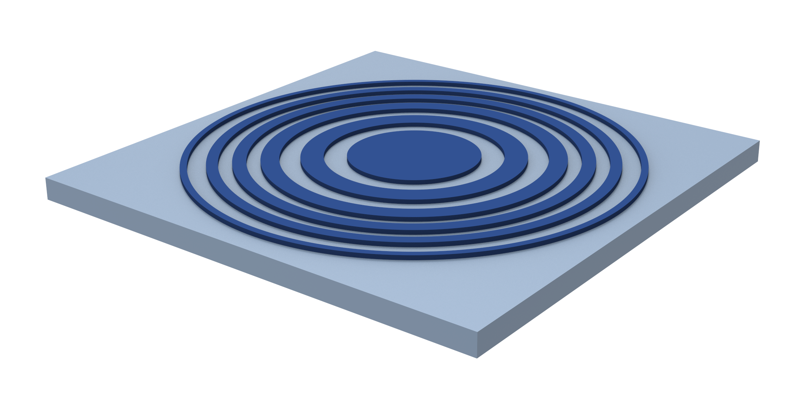# Field projection for a zone plate
A Fresnel zone plate is a diffractive optical element that is widely used in optics to focus or diffract light. It is a circular or spiral pattern of alternating transparent and opaque zones, where the zones' width decreases as they move away from the center of the plate. The plate works by utilizing the interference of the light waves passing through the different zones, leading to constructive interference at the focus point and destructive interference elsewhere. The resulting diffraction pattern can be used to focus light into a spot or to generate a diffraction pattern. Fresnel zone plates have several advantages over traditional lenses, including their compact size, ease of manufacture, and the ability to focus light of different wavelengths at a single focal point. They are widely used in various applications, such as microscopy, lithography, and astronomy.
This tutorial will show you how to solve for electromagnetic fields far away from your structure using field information stored on a nearby surface. This field projection technique is very useful for reducing the simulation size needed for structures involving lots of empty space.
As an example, we will simulate a simple zone plate lens with a very thin domain size, and measure the transmitted fields just above the structure. Then, we’ll show how to use field projections to compute the fields at the focal plane above the lens.
To view the full example in Python, please click here (opens new window).
To view the example in our web GUI, please click here (opens new window).

